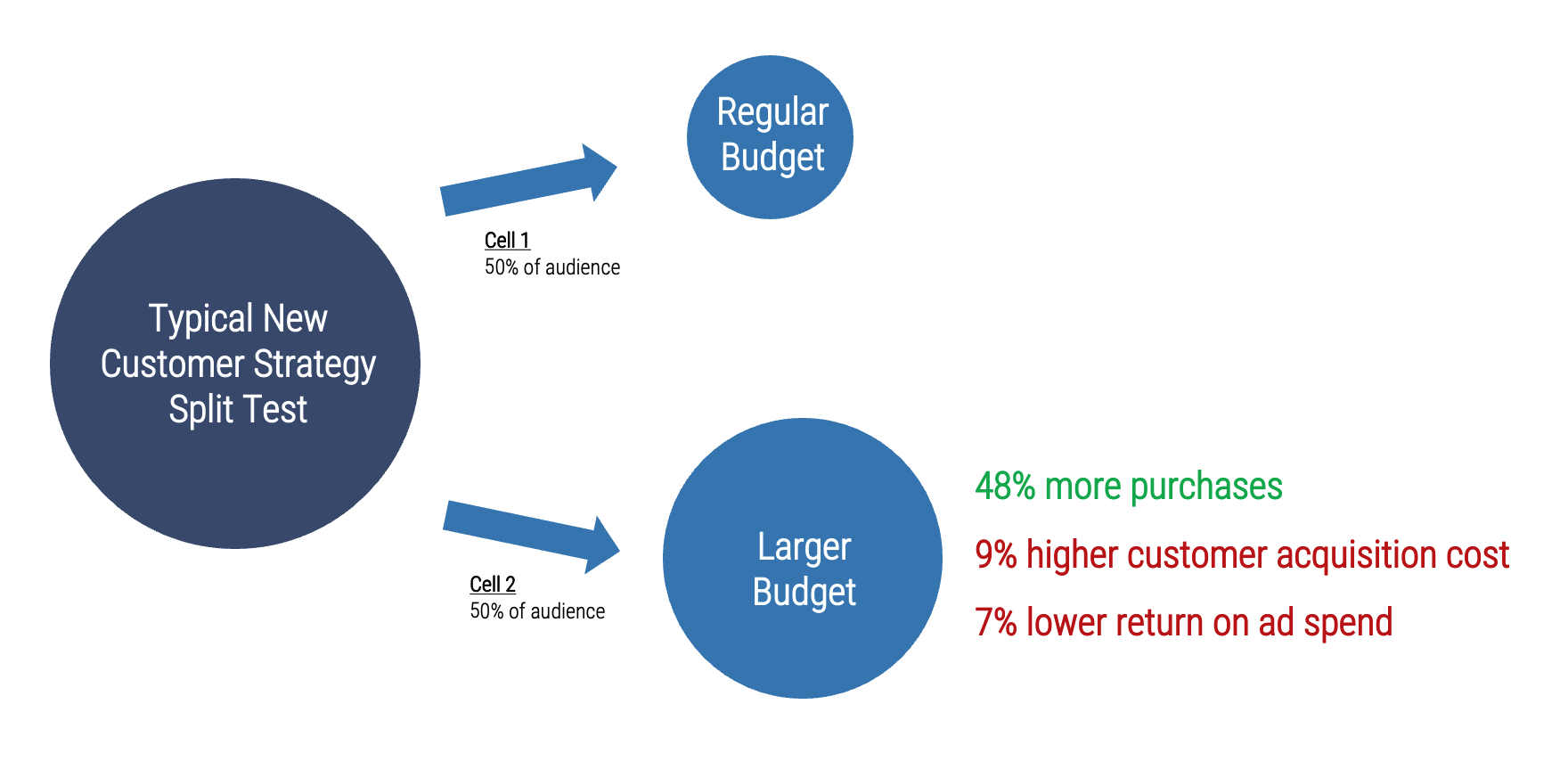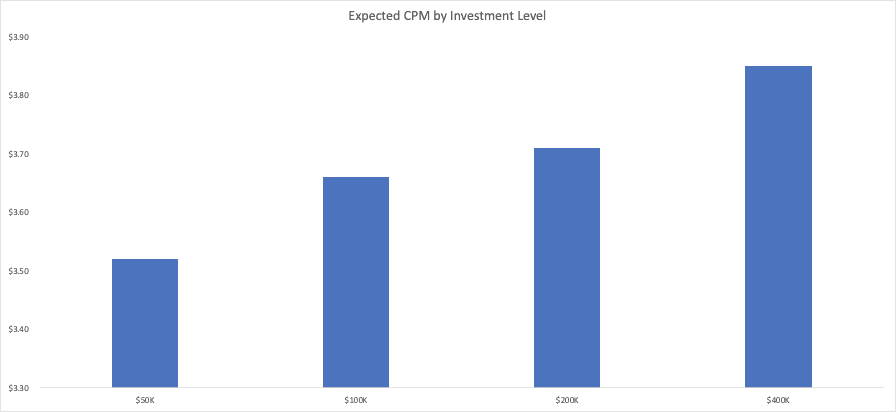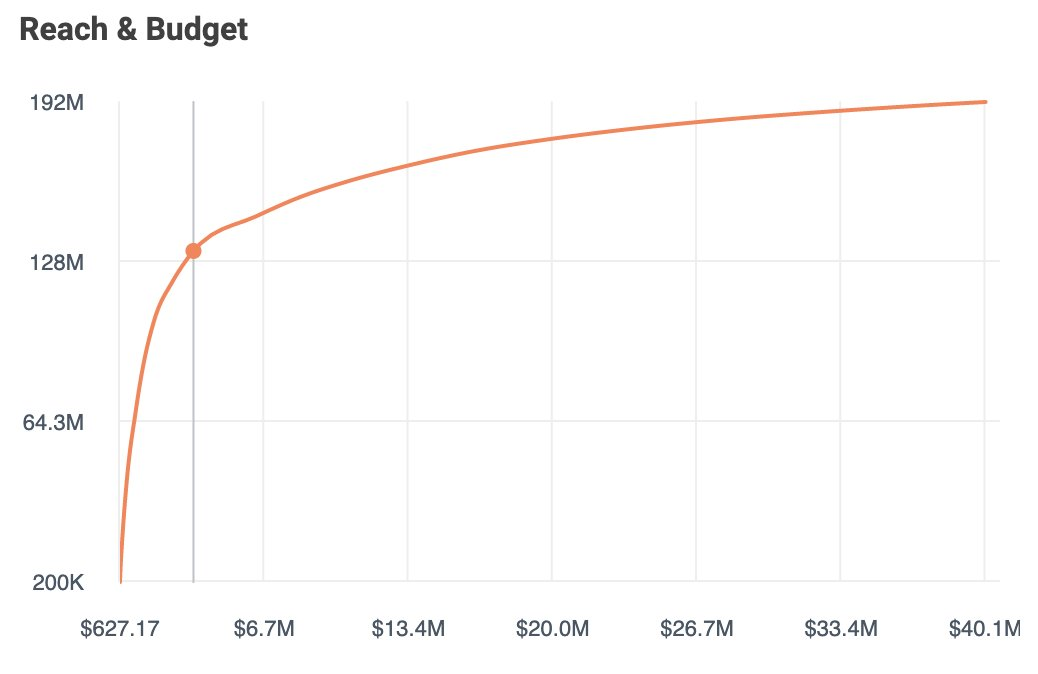Return on ad spend (ROAS) is important; the higher your ROAS is, the more money you are making on your campaigns per customer. Campaigns with high ROAS, therefore, are clearly appealing to many marketers and brands alike.
In our experience, however, advertising agencies who are focused exclusively on touting ROAS are typically going all in on heavy retargeting campaigns, reaching warm audiences at relatively low costs and potentially taking credit for orders that would have occurred anyway.
These agencies are missing the point of Facebook ads. While retargeting campaigns are great and do have value, focusing too much energy on them will actually limit your campaigns and keep you from properly scaling, high ROAS or not.
The true and intended strength of Facebook is all about reaching and acquiring new customers at scale. We know this, because we tested it.
In this post, we’re going to look at the case study we used to split test this and how you can increase profit overall by not focusing on ROAS.
The Case Study
We recently had a client who was focused on a higher ROAS goal when we first started working with them. Because they felt Facebook Ads weren’t profitable enough at a lower ROAS, they didn’t want to invest in lower ROAS campaigns.
However, by only prioritizing campaigns that translated into a high ROAS, we felt they might be leaving profit on the table. While this seems counterintuitive, their high expectations around returns was actually limiting their ability to scale significantly and see greater gross profit.
While some might choose to look at month-over-month results to understand how increasing spend impacts performance, this neglects seasonality and auction dynamics. For example, $100K in August spending won’t yield the same results as $100k in September.
As a result, we ran a split test to look at the impact of a larger budget in the same environment, prioritizing cost efficient scale over a high ROAS alone.
For one campaign, we kept their typical budget. In the second, we increased their standard budget by over 60%.
When they put more investment into the ad system, they saw 50% more purchases. More impressively, Their CPA was only 9% higher and their ROAS only 7% lower.

Based on their margins, they were actually driving more sales and profit when they were investing more, even if it came at a slightly lower ROAS per campaign. The increase in marketing costs were offset by the number or products sold at their existing margins, increasing profit significantly.
Why Facebook Only Drives Small Performance Changes As You Scale Against New Audiences
So here’s the question: Why does FB only drive nominal changes in performance as you scale against new audiences?
There are two core reasons:
1. CPM’s increase nominally compared to an increase in spend if the audience is large enough.
2. Conversion rates don’t dramatically decrease if the qualified audience is large enough.
Let’s look at an example. Say you used Facebook’s campaign planner tool (which can be accessed under your Ads Manager) to project how CPM’s would be impacted if you wanted to run a traffic campaign targeting everyone in the United States. You want to review how the CPMs would shift if in a $50K per month budget compared to a $400K per month budget. In this specific example, you see that they’ll only shift by about 9%.

Because the addressable audience is so large, the cost to reach that next user is essentially the same as reaching the first one. In the $50K to $400K budget increase, even though I’m spending 8X more, I would still only reach about 20% of my addressable audience.
Ultimately, advertising spend only becomes a CPM factor when you look at it relative to audience penetration. In our experience, when you get close to about 60% – 70% audience penetration, you start to see significant increases in CPM’s. This is what you need to watch for closely when scaling.
Additionally, while there is concern you might see a decrease in conversion rates, if your audience is large enough, this shouldn’t be an issue.
In the split test we ran, CVR’s only decreased by 1%.
This is because CVR’s don’t dramatically decrease as long as you are going after a broader audience where the cost to acquire your next customer might not be that much more expensive than the first because both people are just as likely to buy.
This only can become an issue if you’ve already tapped out of your addressable audience at your investment level.
For example, if you are only targeting 100K people who’ve visited your site and reach 90% of them, you’ve already converted all the low hanging fruit. Another example would be if you’ve converted as many men 18-24 as you can, but need a more tailored ad/website for women 18-24 at the same rate.
As long as your audience is large enough and qualified enough, you should have the ability to continue scaling against your target audience at a nominal cost.
How Advertisers Can Leverage This to Scale
Advertisers can leverage this knowledge to scale more effectively. Knowledge is power here, so while campaigns with high ROAS are great, remember that they aren’t automatically the end-all be-all; especially if you have room in your budget.
If you have room in your profit margins to invest a little more per click or action into your campaigns, consider doing so. You can actually be more profitable in the long run by prioritizing conversion and purchase rates over CPA targets, as long as you’re staying within profitable margins.
Chances are that if you’re focusing exclusively on ROAS, you’re shooting yourself in the foot and holding your business back from more profitable growth.
Here are a few tips for how you can use this knowledge to scale more effectively and profitably:
– Be aggressive about creating and testing your campaigns early in the funnel. It’s all about reaching high-quality new audience members. These audiences typically won’t convert right away, but they’re crucial building blocks to push users who will convert later into your funnel.
– Allocate 70-80% of your budget to cold audiences. You need to be putting most of your budget into attracting new customers. Only 20-30% of your budget should focus on reenaging warmer audiences. You can only scale your business with a larger client base, after all, and bringing in new customers can help combat natural churn rates.
– Put more of your budget into campaigns prioritizing your true objectives. Are you wanting more conversions? Then prioritize conversion-based campaigns by investing more of your ad spend here, even if the CPC overall is a little higher than on other types of campaigns.
Final Thoughts
Plenty of marketing blogs will tell you to find your campaign with the highest ROAS and to put all of your eggs into that specific advertising basket. The highest ROAS, however, clearly doesn’t always mean the highest profit.
It’s essential to find the campaigns that are the most profitable overall, which sometimes means finding those who can attract higher quality customers who will contribute to higher average order values, higher profit margins, and higher retention rates.
Remember that advertising — Facebook Ads included — is holistic, so you need to look at the whole picture instead of a single metric.
Interested in learning more about our holistic approach to paid social advertising? See how we can help you scale your brand. Get in touch with us here.

